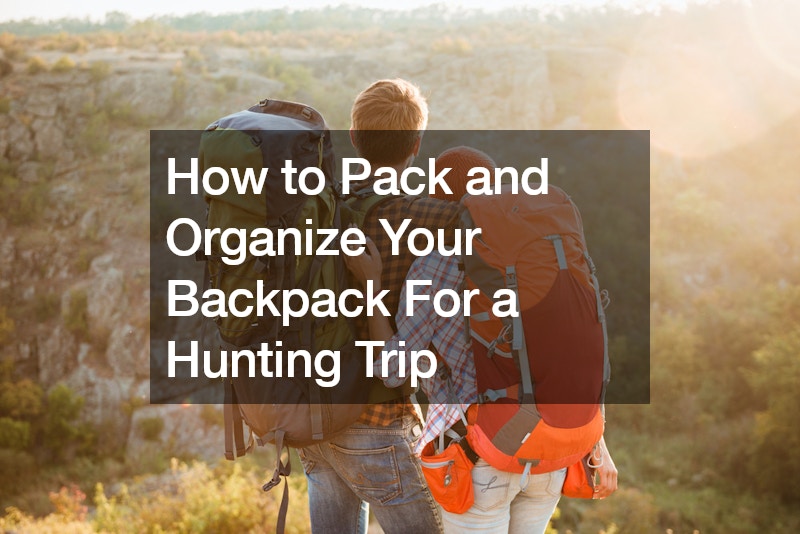Preparing for a hunting trip involves more than just grabbing your gear and heading out into the wilderness. Properly packing and organizing your backpack, also known as a hunting pack, can make a significant difference in your comfort, mobility, and overall experience during the excursion. In this guide, we’ll walk you through the essential steps to pack and organize your backpack effectively for a successful hunting trip.
Understanding the Basics
Before diving into the packing process, it’s crucial to understand the basic principles of packing a hunting backpack. The goal is to maximize space, distribute weight evenly, and ensure easy access to essential items when needed.
By following these principles, you can optimize your backpack’s capacity and functionality while minimizing discomfort and fatigue during your hunt.
Start with a Clean Slate
Begin by emptying your backpack and laying out all your hunting gear in front of you. This step allows you to assess your inventory, prioritize essential items, and eliminate any unnecessary gear. It’s essential to pack only what you need for the specific hunting trip to avoid overloading your backpack with excess weight.
Organize Your Gear
Once you’ve selected the necessary gear, organize it into categories based on usage frequency and size. For example, place lightweight and bulky items such as your tent, sleeping bag, and sleeping pad at the bottom of your backpack to create a stable foundation. Next, pack medium-sized items like clothing layers, rain gear, and insulation layers in the middle section of your pack.
Rolling your clothing items instead of folding them can help save space and prevent wrinkles. Additionally, consider using compression sacks or waterproof stuff sacks to further reduce the volume of your gear and protect it from moisture.
Utilize Every Space
Maximize the available space in your backpack by filling empty gaps and air pockets with smaller items like gloves, hats, and toiletries. This strategy helps prevent shifting and ensures that your gear remains tightly packed throughout your hunt.
For items that you may need quick access to, such as your spotting scope, rain jacket, or snacks, utilize exterior pockets or attachment points on your backpack. This allows you to retrieve essential items without having to rummage through the main compartment of your pack.
Balance and Distribute Weight
Proper weight distribution is essential for maintaining balance and stability while hiking or traversing rugged terrain. Distribute heavy items evenly throughout your backpack to prevent strain on your back and shoulders. Avoid placing all the weight on one side of your pack, as this can cause discomfort and fatigue over time.
Consider attaching larger items such as trekking poles or a tripod to the exterior of your backpack using compression straps or gear loops. This not only frees up space inside your pack but also helps distribute weight more evenly and improves overall balance.
Secure Your Load
Once you’ve packed your backpack, take the time to secure and adjust all straps, buckles, and compression systems. Tighten the shoulder straps, hip belt, and sternum strap to ensure a snug and comfortable fit. Adjust the load lifters to position the weight closer to your body and improve stability.
Inspect your backpack for any loose or dangling straps that could snag on branches or brush during your hunt. Secure excess strap lengths with elastic bands or tuck them away to prevent interference and maintain a streamlined profile.
Final Check and Test
Before hitting the trail, perform a final check of your packed backpack to ensure that everything is properly organized and secured. Test the weight distribution by lifting and wearing your pack to assess comfort and balance. Make any necessary adjustments to optimize the fit and functionality of your hunting pack.
Safety and Emergency Preparedness
Prioritize safety in the wilderness by familiarizing yourself with potential hazards and implementing precautionary measures. Carry a first aid kit and know how to administer basic medical care for injuries and emergencies. Develop a communication plan with your hunting partners and designate meeting points in case of separation. Be prepared for wildlife encounters by carrying bear spray or other deterrents and knowing how to react appropriately.
Maintaining Your Hunting Gear
Proper maintenance of your hunting equipment is essential for optimal performance and longevity. Clean your firearms regularly and inspect them for any signs of wear or damage. Store ammunition in a cool, dry place and rotate stock to ensure freshness. Maintain sharpness on knives and cutting tools, and lubricate moving parts to prevent rust and corrosion. After each hunting trip, clean and store your gear properly to extend its lifespan and readiness for future use.
By following these tips for packing and organizing your backpack for a hunting trip, you can streamline your preparation process and enhance your overall hunting experience. Remember to pack efficiently, distribute weight evenly, and prioritize accessibility to essential gear. With a well-packed and organized backpack, you’ll be ready to tackle any hunting adventure with confidence and ease.
.


